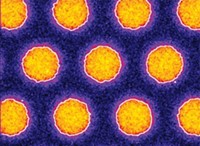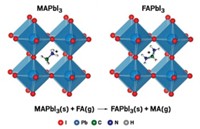Advertisement
Grab your lab coat. Let's get started
Welcome!
Welcome!
Create an account below to get 6 C&EN articles per month, receive newsletters and more - all free.
It seems this is your first time logging in online. Please enter the following information to continue.
As an ACS member you automatically get access to this site. All we need is few more details to create your reading experience.
Not you? Sign in with a different account.
Not you? Sign in with a different account.
ERROR 1
ERROR 1
ERROR 2
ERROR 2
ERROR 2
ERROR 2
ERROR 2
Password and Confirm password must match.
If you have an ACS member number, please enter it here so we can link this account to your membership. (optional)
ERROR 2
ACS values your privacy. By submitting your information, you are gaining access to C&EN and subscribing to our weekly newsletter. We use the information you provide to make your reading experience better, and we will never sell your data to third party members.
Synthesis
Straining catalyst films boosts water-splitting
Scanning probe study of MoS2 shows that stressed active sites produce more hydrogen
by Mitch Jacoby
April 4, 2016
| A version of this story appeared in
Volume 94, Issue 14

Adding stress and strain to the lives of busy researchers hardly sounds like a strategy for improving productivity. It can work wonders for catalysts, however.
A study has revealed that straining catalytic sites in molybdenum disulfide films substantially boosts the reaction rate of a key step in the water-splitting process relative to the rate on unstrained films (J. Am. Chem. Soc. 2016, DOI: 10.1021/jacs.6b01377).
Splitting water could provide a nearly limitless supply of hydrogen to run clean-burning fuel cells if a suitable catalyst can be found. Platinum works well, but it’s expensive. In looking elsewhere, researchers have found that low-cost MoS2 films with microscopic defects catalyze H2 production. But complete details of the process have remained unknown, impeding further development.
To sort out the kinetics, a team led by Xiaolin Zheng of Stanford University and Allen J. Bard of the University of Texas, Austin, exposed a MoS2 film to a plasma to induce sulfur vacancies. They draped the defective film over an electrode patterned with an array of gold nanopillars, causing strain in the portions of the film resting on the pillars. By using scanning electrochemical microscopy, the team showed that the strain boosted H2 evolution by a factor of four.
“This is an elegant study that introduces an effective method for quantifying the effects of mechanical strain in an electrocatalytic reaction,” comments Pennsylvania State University’s Thomas E. Mallouk. In principle, this method could be used to study strain effects in electrolyzers, fuel cells, and solar cells, he says.





Join the conversation
Contact the reporter
Submit a Letter to the Editor for publication
Engage with us on Twitter